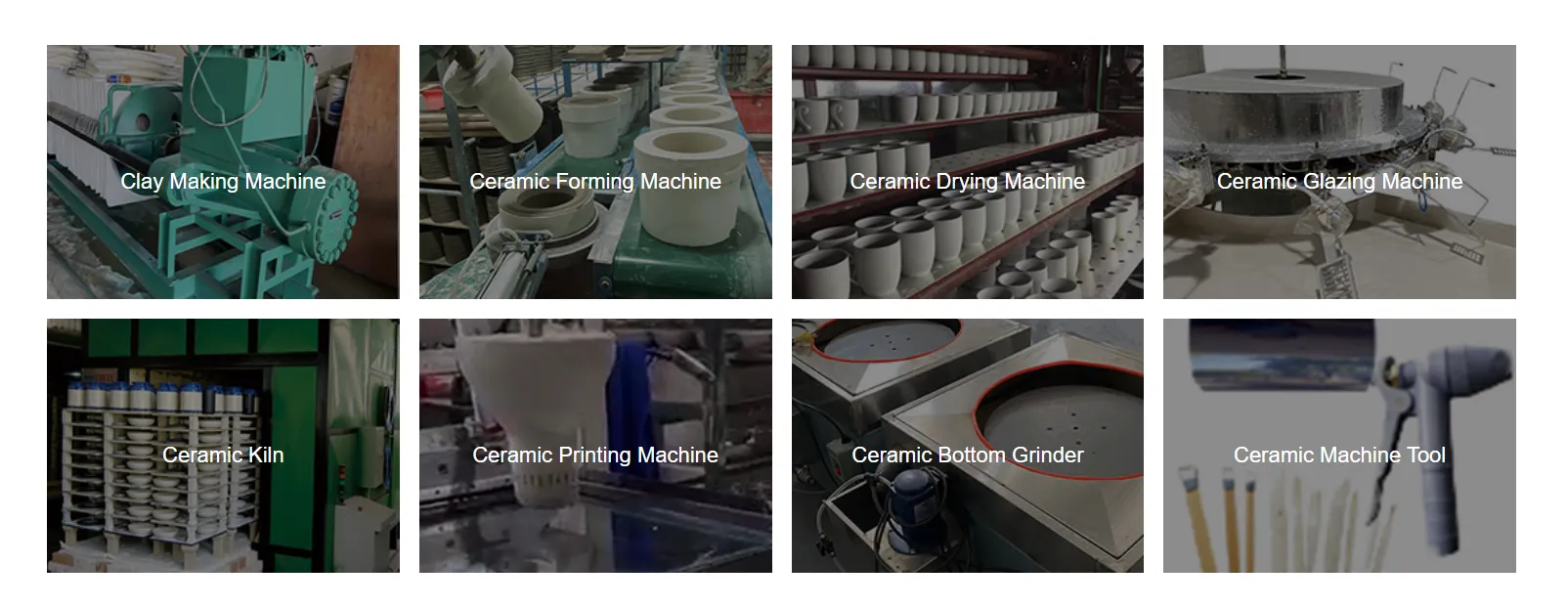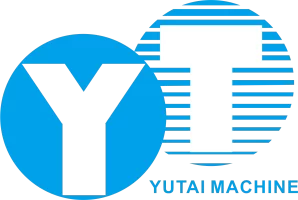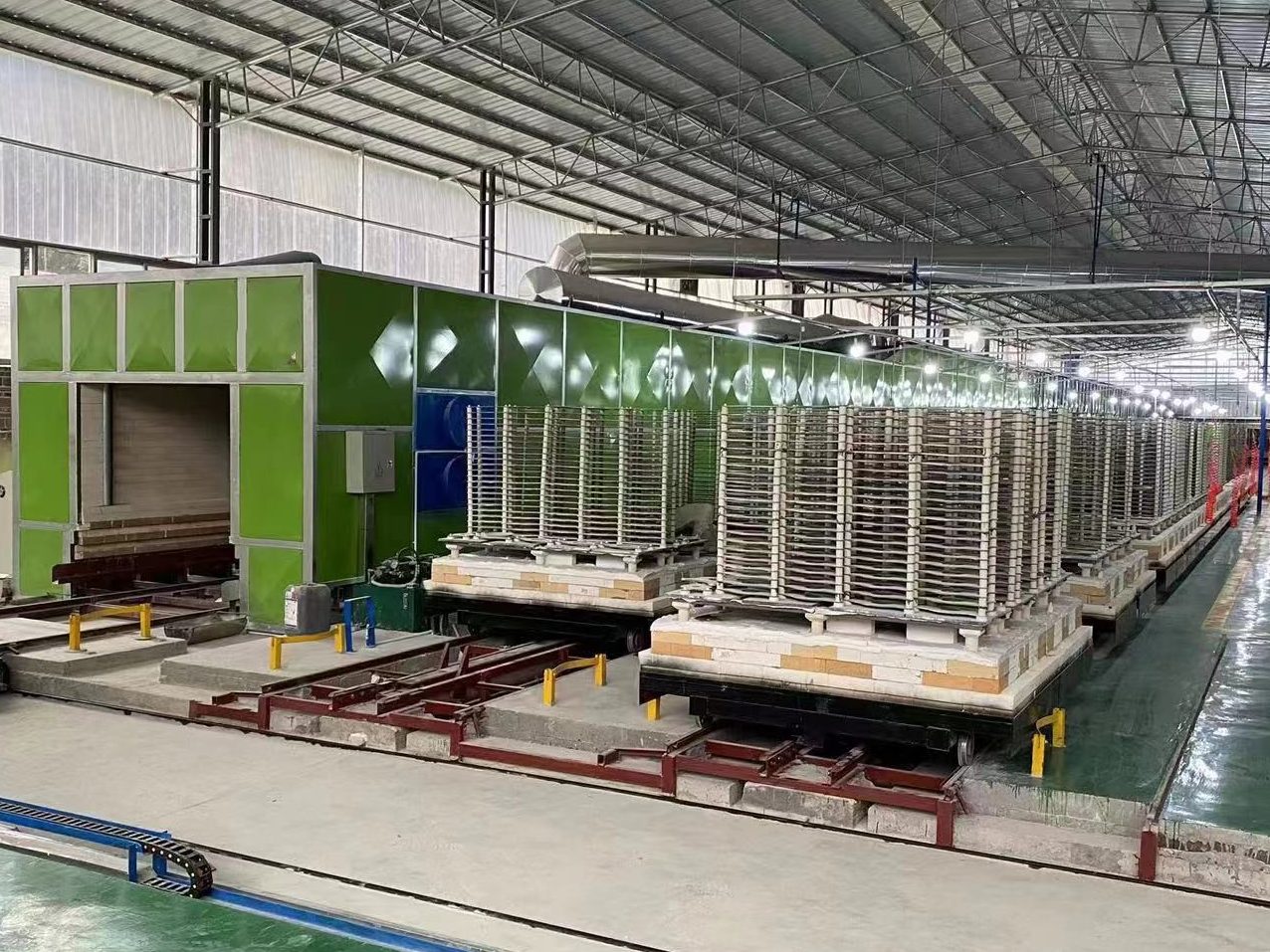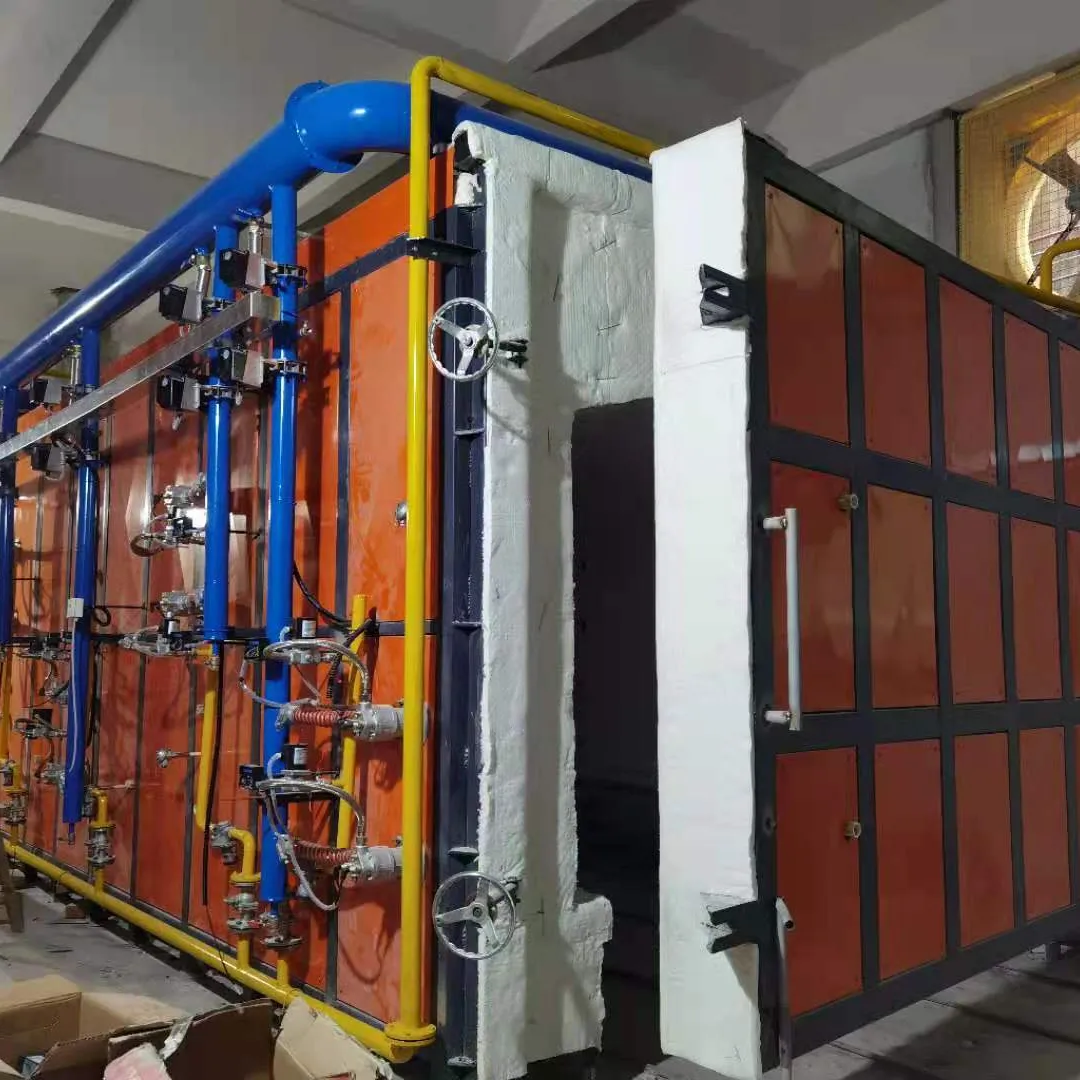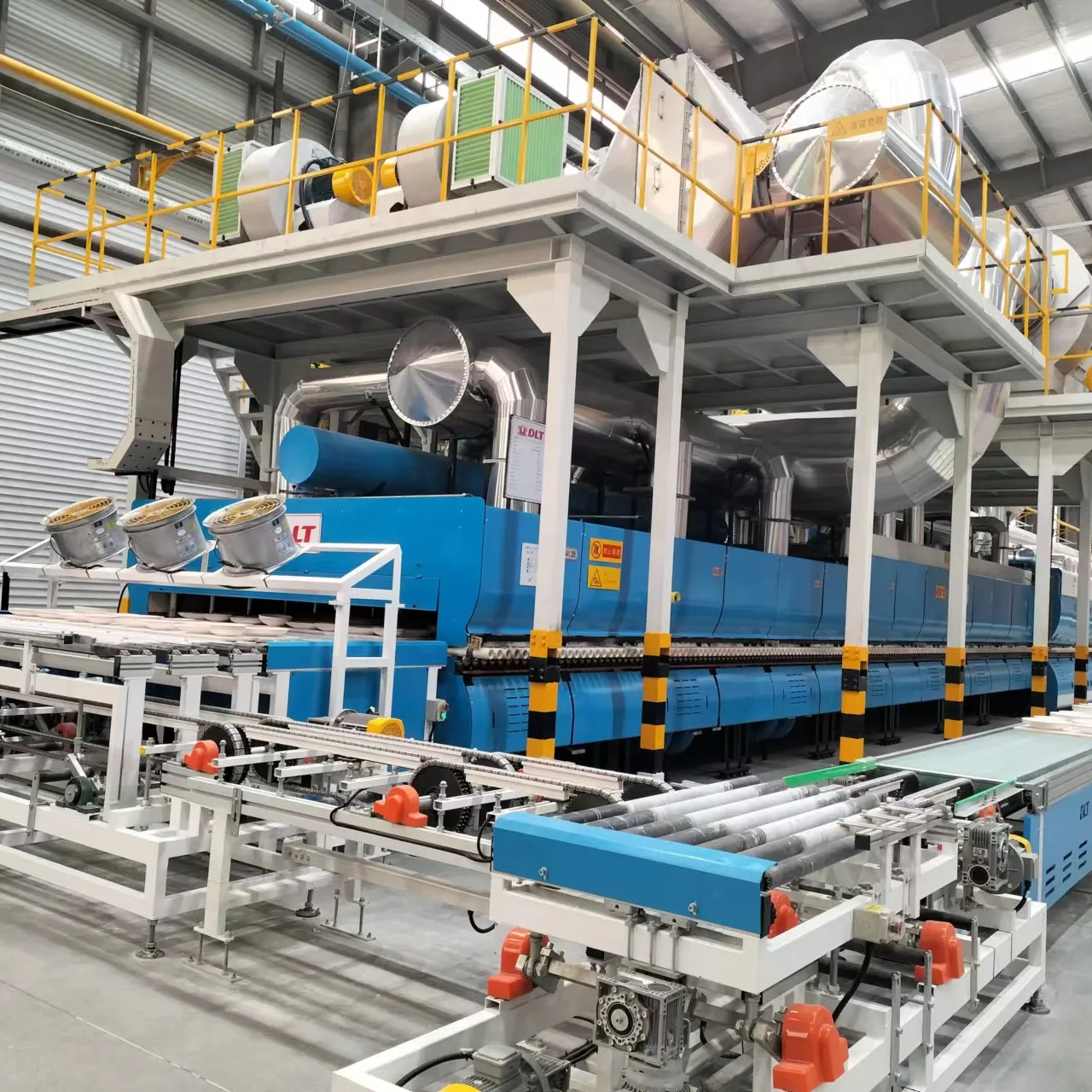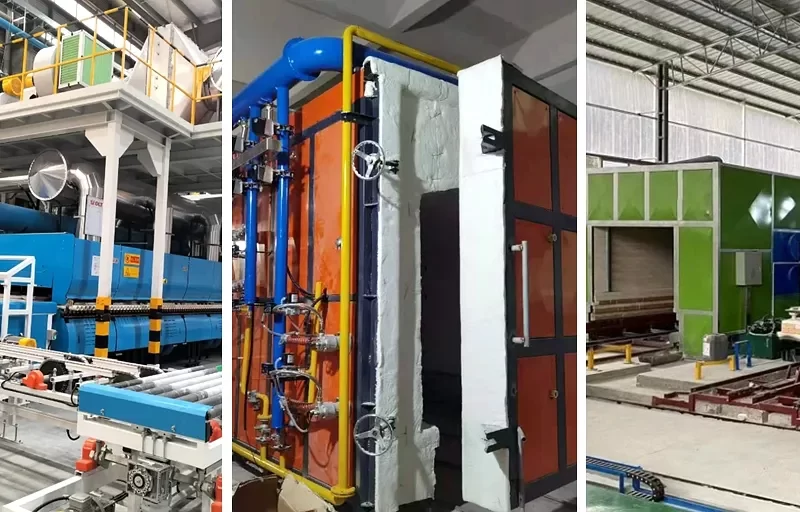
Forno é uma peça de equipamento indispensável e importante no processo de fabrico de cerâmica. O seu desempenho e seleção estão diretamente relacionados com a qualidade e a eficiência da produção de produtos cerâmicos. Com o desenvolvimento da indústria cerâmica, surgiram no mercado vários tipos de fornos, nomeadamente fornos de túnel, fornos de vaivém, fornos de rolosetc. Cada forno tem as suas caraterísticas únicas e a sua gama de aplicações, pelo que a escolha do forno correto é crucial para os fabricantes de cerâmica.
Diferentes tipos de fornos
Forno de túnel: Um forno de túnel é um forno contínuo com uma longa estrutura em túnel. Caracteriza-se por uma temperatura de cozedura uniforme e um ciclo de cozedura curto, tornando-o adequado para uma produção contínua e em grande escala. Os fornos de túnel são adequados para a produção de produtos cerâmicos planos, tais como azulejos e ladrilhos de cerâmica.
Forno de vaivém: Um forno de vaivém é um forno intermitente com uma estrutura semelhante a uma carruagem de comboio e pode realizar movimentos alternativos. O forno de vaivém tem as caraterísticas de precisão de controlo de alta temperatura e alta eficiência térmica. É adequado para a produção de pequenos lotes de produtos cerâmicos com requisitos de alta precisão, como a cerâmica artística.
Forno de rolos: O forno de rolos usa rolos como correias transportadoras, e os produtos rolam através dos rolos para queima. O forno de rolos tem as vantagens da velocidade de queima rápida, alta eficiência de produção e aquecimento uniforme. É especialmente adequado para a produção de produtos cerâmicos grandes, pesados ou finos, tais como azulejos de cerâmica, placas de porcelana, etc.
Vantagens e desvantagens dos diferentes fornos
Forno de túnel
Vantagem:
- Grande escala de produção: Os fornos de túnel são geralmente adequados para a produção em grande escala e podem produzir um grande número de artigos, tais como cerâmica, vidro, cimento e outros produtos, para satisfazer as necessidades da produção em massa.
- Elevada eficiência de queima: O forno de túnel pode atingir uma produção contínua, a sua eficiência de queima é elevada e pode fornecer continuamente e de forma estável os produtos necessários.
- Precisão do controlo de alta temperatura: A precisão do controlo da temperatura dos fornos de túnel é geralmente elevada e pode ser controlada dentro de ±5°C, o que é benéfico para garantir a estabilidade da qualidade do produto.
- Distribuição uniforme da temperatura no forno: Devido à conceção e ao método de aquecimento do forno de túnel, a distribuição da temperatura no forno é uniforme, o que pode garantir que o produto é aquecido uniformemente durante o processo de cozedura e reduzir a taxa de defeitos.
- Boa qualidade do produto: Uma vez que a distribuição de temperatura do forno de túnel é uniforme e estável, a qualidade do produto é boa, e a cor, suavidade e outras qualidades de aparência do produto podem ser garantidas.
- Baixo consumo de energia: Como o calor do forno de túnel está concentrado nos materiais, aquece e arrefece rapidamente, o que pode poupar eletricidade e reduzir o consumo de energia.
Deficiências:
- Custos de investimento elevados: Os custos de construção e de funcionamento dos fornos de túnel são relativamente elevados e podem ser incomportáveis para os fabricantes de pequena escala.
- Facilmente afetado pelo ambiente: O funcionamento do forno de túnel é facilmente afetado por factores ambientais como as condições meteorológicas, tais como chuvas, tufões e outras condições meteorológicas que podem afetar o funcionamento do forno.
- Questões ambientais: Os fornos de túnel tradicionais utilizam combustíveis fósseis como o petróleo e o carvão para o aquecimento. O gás de combustão produzido contém uma grande quantidade de gases nocivos, como o dióxido de carbono e o dióxido de enxofre, que poluem gravemente o ambiente. No entanto, com o reforço das políticas de proteção ambiental, a utilização de tecnologia avançada de tratamento de gases de combustão pode reduzir a poluição ambiental.
Forno de vaivém
Vantagem:
- Grande flexibilidade operacional: O forno de vaivém tem a flexibilidade de um forno de chama descendente geral e pode satisfazer as necessidades de múltiplas variedades de produção.
- Melhoria das condições de trabalho: A carga e a descarga do forno e o arrefecimento parcial dos produtos podem ser efectuados fora do forno, o que melhora as condições de trabalho.
- Redução do tempo de execução: O funcionamento fora do forno pode reduzir o tempo de rotação do forno e melhorar a eficiência da produção.
Deficiências:
- Elevado consumo de calor: Devido à combustão intermitente, o forno tem grandes perdas de armazenamento e dissipação de calor, e a temperatura dos gases de combustão é elevada, resultando num elevado consumo de calor. No entanto, esta deficiência foi muito melhorada no novo forno de vaivém de poupança de energia, melhorando a estrutura de alvenaria do corpo do forno e adicionando um dispositivo de utilização do calor residual dos gases de escape.
- Automatização relativamente reduzida: Em comparação com os fornos contínuos, os fornos de vaivém podem ser menos automatizados e requerem mais operações manuais.
- Tenha em atenção que, ao selecionar um forno, factores como o tipo de produto, a escala de produção, o ciclo de produção e o orçamento de custos devem ser considerados de forma abrangente para garantir que o forno selecionado pode satisfazer as necessidades de produção e maximizar a eficiência da produção e a qualidade do produto.
Forno de rolos
Vantagem:
- Temperatura uniforme: O forno de rolos pode aquecer os rolos superior e inferior ao mesmo tempo para garantir uma temperatura uniforme no forno e fazer com que a peça em bruto seja aquecida de forma mais uniforme.
- Não são necessários materiais refractários: O forno de rolos não necessita de utilizar materiais refractários, tais como carros de forno e esticadores durante o funcionamento, o que reduz os custos.
- Ciclo de produção curto: O ciclo de cozedura do produto é relativamente curto, o que melhora a eficiência da produção.
- Baixo consumo de combustível: Devido à temperatura uniforme no forno e à elevada eficiência de aquecimento, o consumo de combustível do forno de rolos é relativamente baixo.
Deficiências:
- Limitações de carga e de largura: A largura e a capacidade de carga do forno são limitadas pelo desempenho a alta temperatura dos rolos, que podem não ser adequados para a cozedura de produtos grandes ou pesados.
- Dificuldade em resolver os problemas de entupimento: É difícil manusear o produto depois de este estar entupido no forno.
- Problema de coçar: Embora a conceção dos fornos de rolos esteja a melhorar constantemente, o problema da raspagem ainda não foi completamente resolvido.
Como escolher o forno para a sua fábrica
A escolha de um forno adequado requer a consideração de muitos factores, incluindo o tipo de produto, a escala de produção, o ciclo de produção, o orçamento de custos, etc. Aqui estão algumas sugestões para a sua consideração:
- Escala de produção
Para a produção em grande escala, devem ser selecionados fornos de túnel ou fornos de rolos para melhorar a eficiência da produção e reduzir os custos.
A produção em pequena escala e de várias variedades pode escolher um forno de vaivém para satisfazer as necessidades de produção flexíveis. - Tipo de produto
A produção de azulejos e ladrilhos de cerâmica é adequada para fornos de túnel ou fornos de rolos.
A cerâmica artística, a cerâmica de laboratório, etc., são adequadas para fornos de vaivém. - Eficiência energética
Considerar o consumo de energia do forno e escolher um forno economizador de energia para reduzir os custos de produção. - Grau de automatização
Os fornos altamente automatizados podem melhorar significativamente a eficiência da produção e reduzir os custos de mão de obra.
Escolha o nível de automatização adequado com base nas necessidades reais da fábrica. - Manutenção e reparação
Escolha um forno com uma estrutura simples e de fácil manutenção para reduzir o tempo de paragem e os custos de manutenção. - Prestar atenção ao ciclo de produção
Os fabricantes com ciclos de produção curtos podem escolher fornos com velocidades de cozedura rápidas, como os fornos de rolos. Os fabricantes que não têm requisitos de ciclos de produção elevados podem escolher fornos com temperaturas de cozedura mais estáveis e maior precisão, como os fornos de vaivém. - Custos orçamentais razoáveis
O preço de um forno varia em função de factores como o modelo, a marca, a tecnologia, entre outros. Escolha o forno certo dentro do seu orçamento para garantir um retorno
Em conclusão
A escolha do forno correto é crucial para os fabricantes de cerâmica. Ao selecionar um forno, factores como o tipo de produto, a escala de produção, o ciclo de produção e o orçamento de custos devem ser totalmente considerados para garantir que o forno selecionado pode satisfazer as necessidades de produção e melhorar a eficiência da produção e a qualidade do produto.
Como fabricante de máquinas para cerâmica, Yutai é especializada na produção de máquinas totalmente automáticas e semi-automáticas para cerâmica. Durante mais de 10 anos, colaborou com muitas fábricas de cerâmica em todo o mundo. Estamos empenhados em fornecer aos clientes equipamento e serviços de forno da mais alta qualidade e esperamos poder colaborar consigo.
